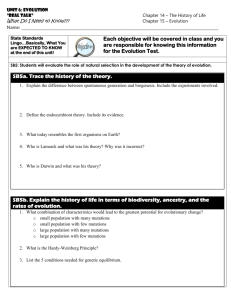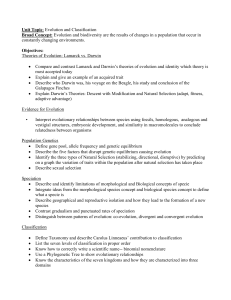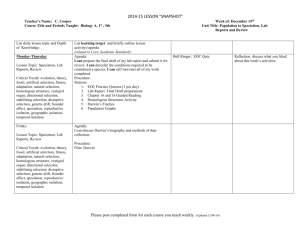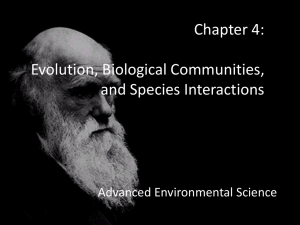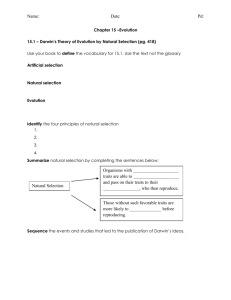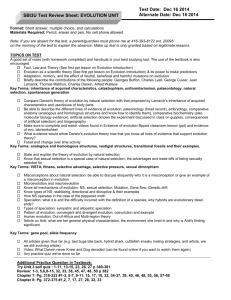Chapter 15
advertisement
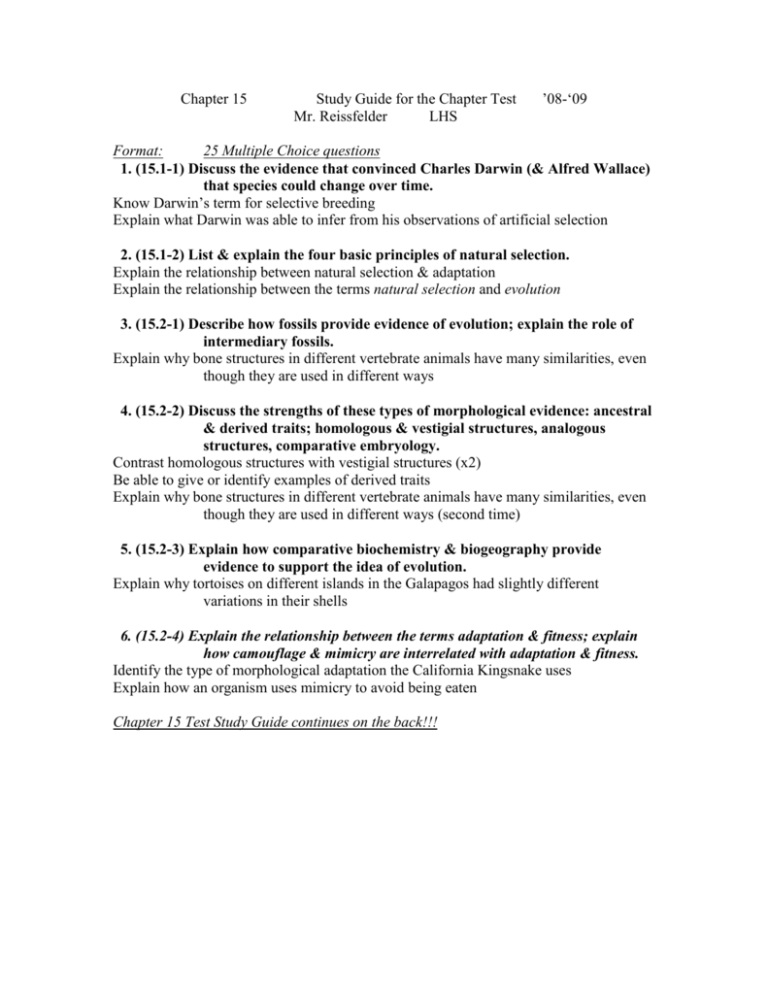
Chapter 15 Study Guide for the Chapter Test Mr. Reissfelder LHS ’08-‘09 Format: 25 Multiple Choice questions 1. (15.1-1) Discuss the evidence that convinced Charles Darwin (& Alfred Wallace) that species could change over time. Know Darwin’s term for selective breeding Explain what Darwin was able to infer from his observations of artificial selection 2. (15.1-2) List & explain the four basic principles of natural selection. Explain the relationship between natural selection & adaptation Explain the relationship between the terms natural selection and evolution 3. (15.2-1) Describe how fossils provide evidence of evolution; explain the role of intermediary fossils. Explain why bone structures in different vertebrate animals have many similarities, even though they are used in different ways 4. (15.2-2) Discuss the strengths of these types of morphological evidence: ancestral & derived traits; homologous & vestigial structures, analogous structures, comparative embryology. Contrast homologous structures with vestigial structures (x2) Be able to give or identify examples of derived traits Explain why bone structures in different vertebrate animals have many similarities, even though they are used in different ways (second time) 5. (15.2-3) Explain how comparative biochemistry & biogeography provide evidence to support the idea of evolution. Explain why tortoises on different islands in the Galapagos had slightly different variations in their shells 6. (15.2-4) Explain the relationship between the terms adaptation & fitness; explain how camouflage & mimicry are interrelated with adaptation & fitness. Identify the type of morphological adaptation the California Kingsnake uses Explain how an organism uses mimicry to avoid being eaten Chapter 15 Test Study Guide continues on the back!!! Chapter 15 Study Guide for the Chapter Test CONTINUED Mr. Reissfelder LHS ’08-‘09 7. (15.3-1) Differentiate between the following mechanisms of evolution: population genetics (Hardy-Weinberg), genetic drift (founder effect, genetic bottleneck), gene flow, non-random mating, mutation, natural selection (stabilizing, directional disruptive & sexual selection) and reproductive isolation (prezygotic vs. postzygotic) Explain why genes are the “raw material” for evolution Explain why the ratio of phenotypes in a population remain the same if they are equally well-adapted Explain how natural selection acts on organisms’ phenotypes to create adaptive advantages Identify the type of natural selection which is affecting a population, given a description of what has happening to that population 8. (15.3-2) Describe the factors that influence speciation: allopatric vs. sympatric speciation. Know what conditions which can cause speciation Know what evidence shows that speciation has occurred 9. (15.3-2a) Compare & contrast these patterns of evolution: adaptive radiation, coevolution, & convergent evolution. Describe the type of evolutionary pattern that causes different animals on different continents to have structural similarities. Identify the type of speciation that occurs when one original ancestor species develops into many different species which are closely related 10. (15.3-3) Contrast the two theories concerning the tempo of evolution: gradualism vs. punctuated equilibrium. Given a diagram or figure which shows the characteristic of that model, identify which tempo of evolution is being shown




